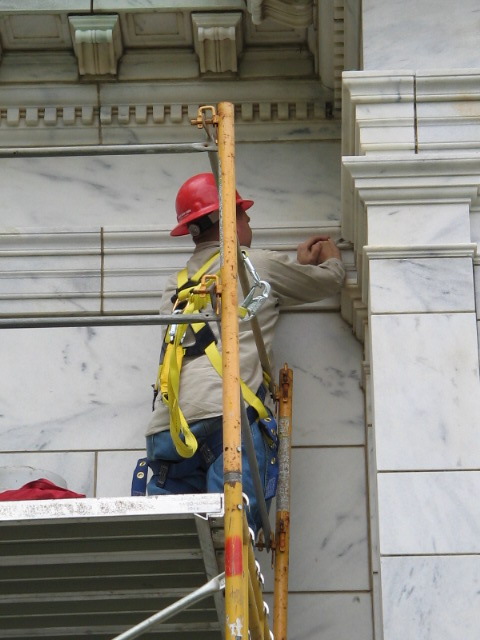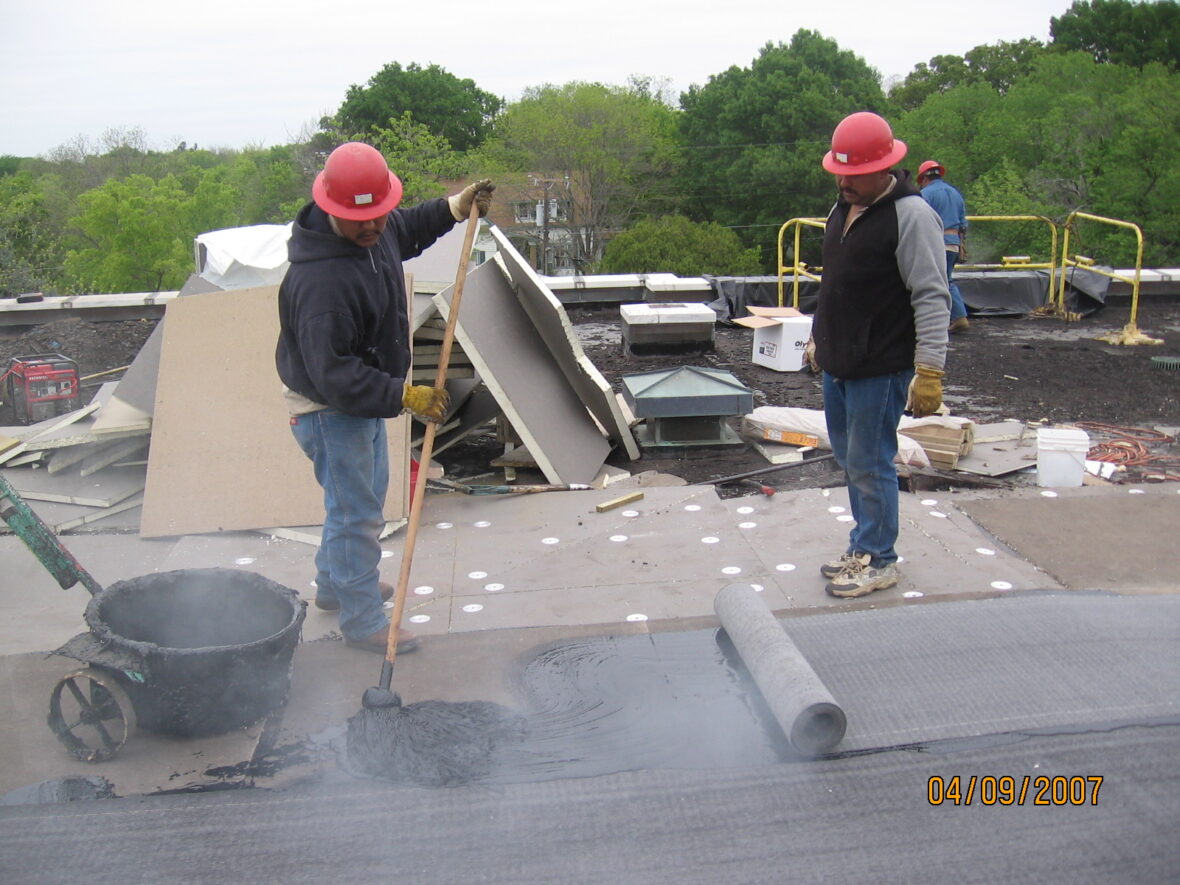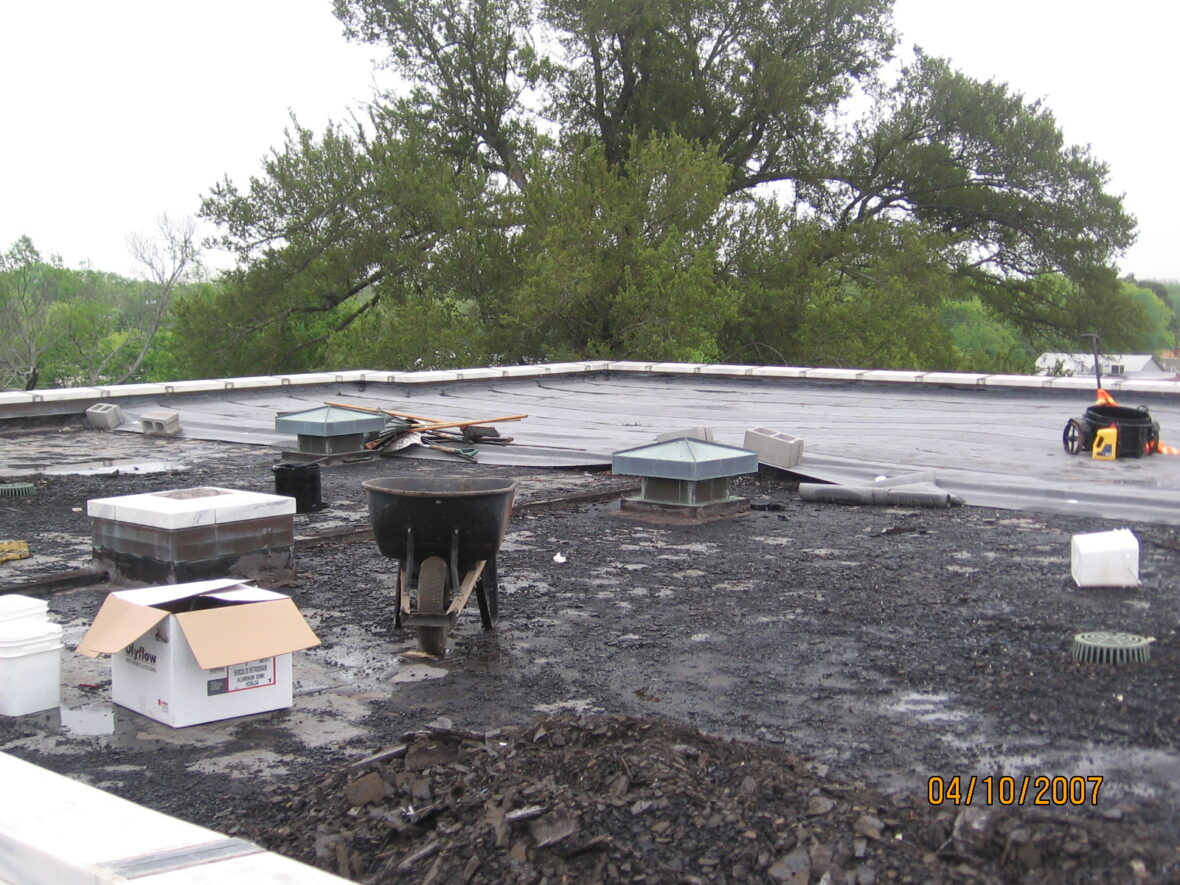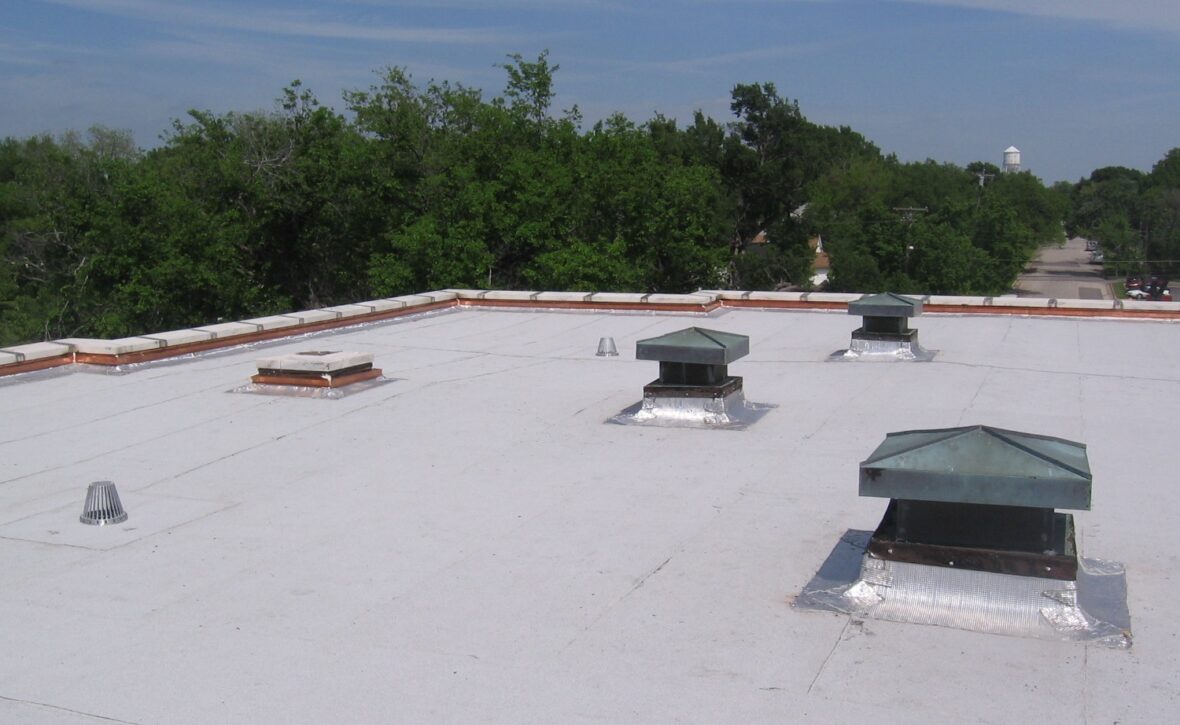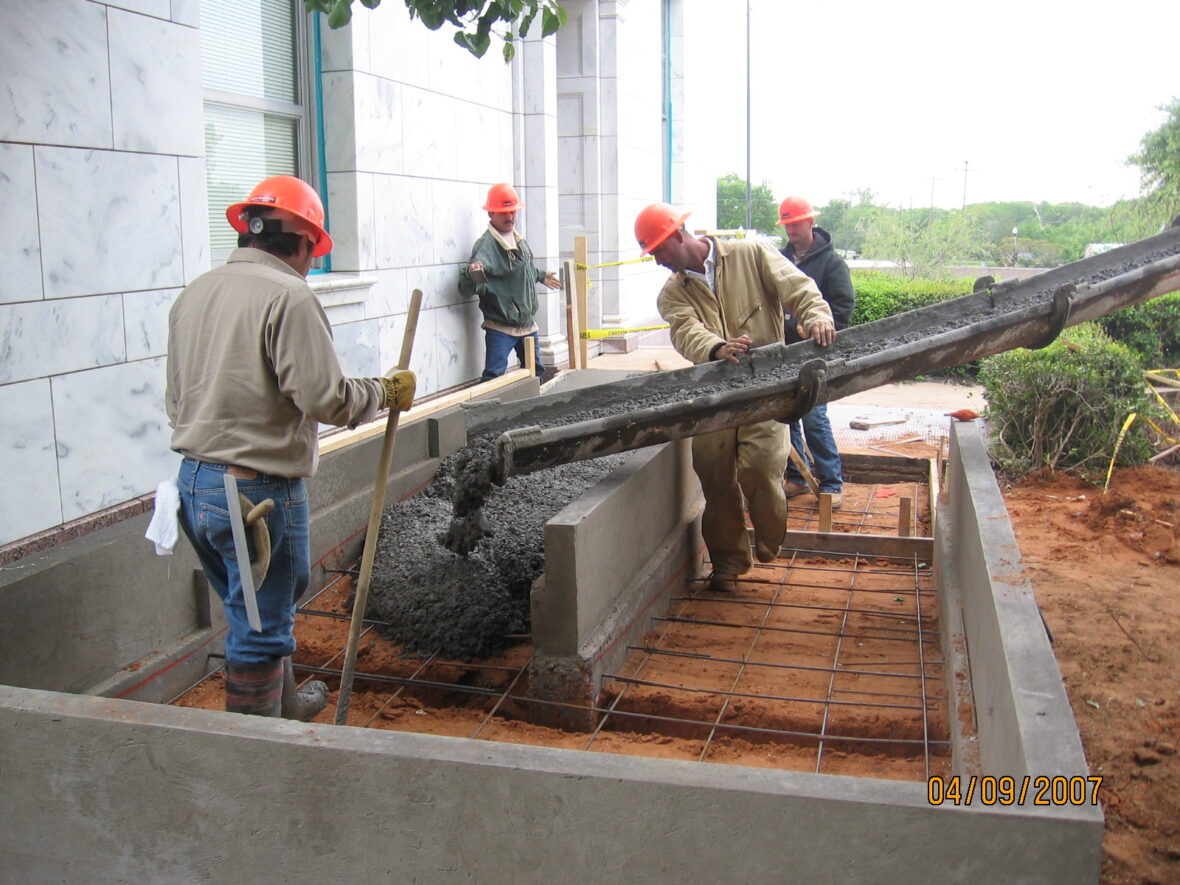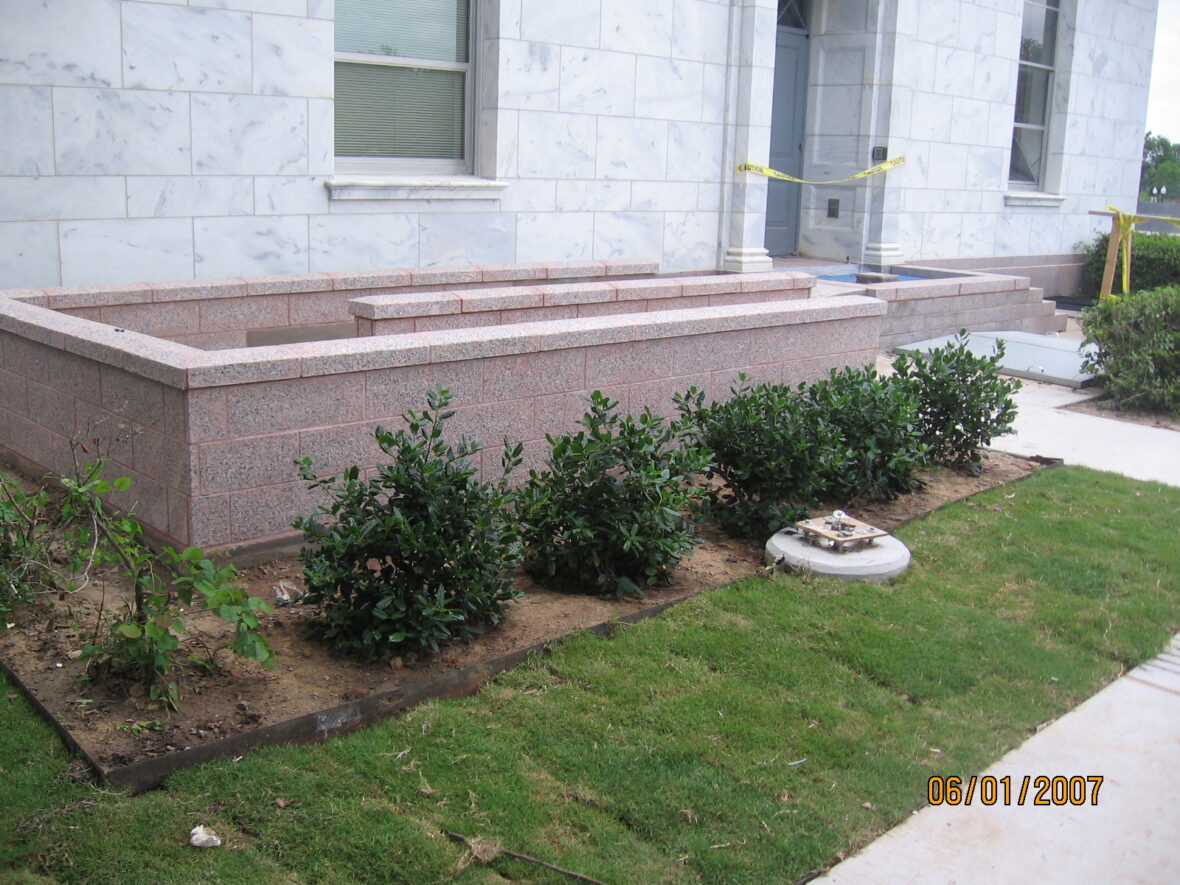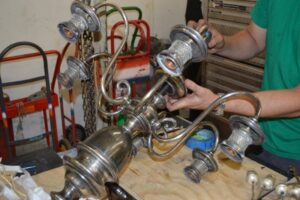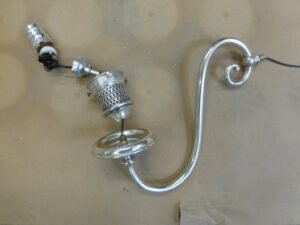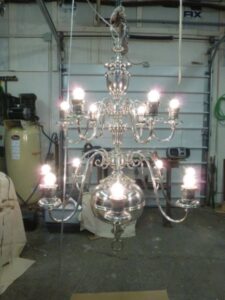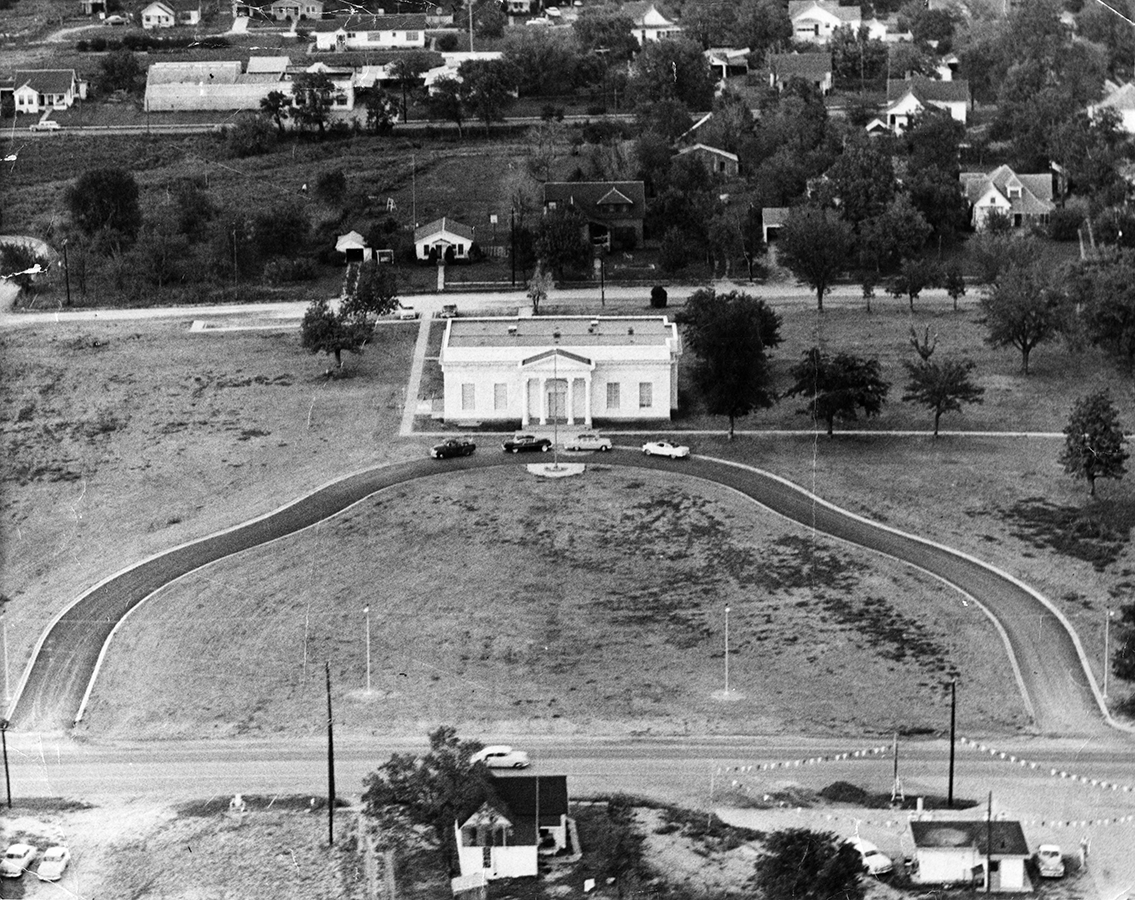
The Sam Rayburn Museum, located in Bonham, Texas, was established by Speaker Samuel Taliaferro Rayburn himself. It is a division of the Briscoe Center for American History, which is among the leading research agencies in the nation for the study of historical topics that relate to the life and career of Speaker Rayburn. His papers reside at the Research and Collections Division located on the Austin, Texas, campus. The Briscoe Center also constitutes the largest archive and library in existence on Texas history, with special strengths on the congressional and political history of Texas.
History of the building
Speaker Rayburn wanted to build a library to house his books, personal papers, and memoirs of his political career. He also wanted the facility to be a resource center of political history available to the people of Fannin County. In 1948, Speaker Rayburn received a $10,000 award from Collier’s magazine in recognition of his distinguished service to the nation. He used this award to establish an endowment that, with additional gifts, eventually supported the construction and operation of a library and museum.
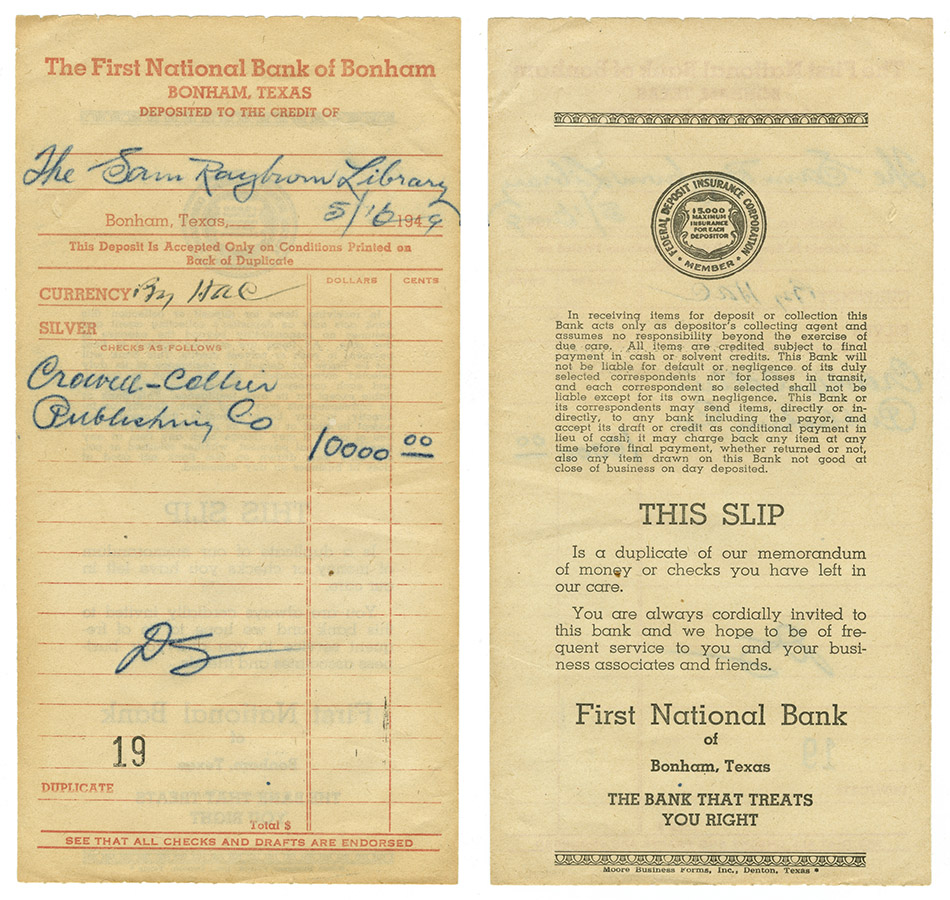
Construction began in December 1955, and the Sam Rayburn Library was dedicated in 1957. From the beginning to 1990, the Rayburn Library was operated under the auspices of the Rayburn Foundation.
On January 1, 1991, ownership of the Sam Rayburn Library was transferred to The University of Texas at Austin and was established as a division of the Briscoe Center. In 2012, the Briscoe Center changed the name to Sam Rayburn Museum.
The grounds
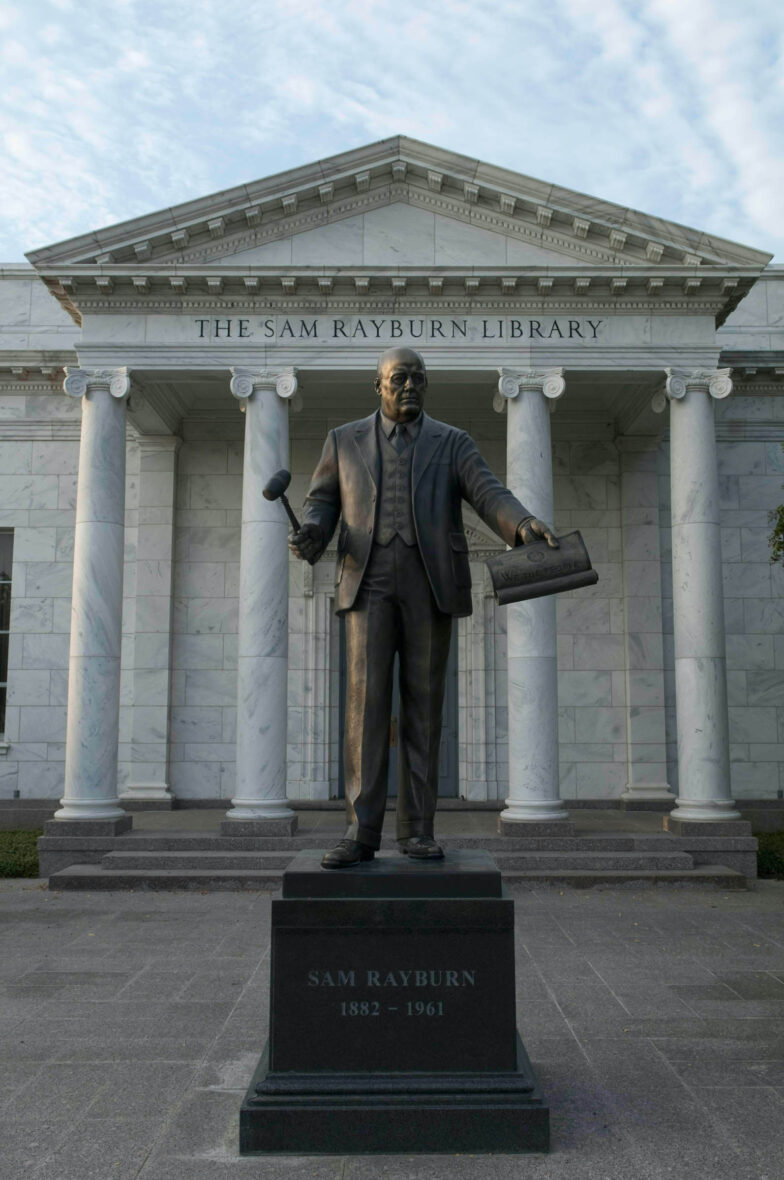
The Sam Rayburn Museum sits on approximately 4.3 acres of land. Speaker Rayburn deemed the location a “historic spot” because originally a college had been built there followed by the Duncan School.
Upon entering the Memorial Statue Plaza, visitors may notice a black memorial wall and fountain, a statue of Rayburn, and the anchor from the retired USS Sam Rayburn submarine.
The landscaping consists of the Miss Lou Memorial Garden, in honor of Speaker Rayburn’s sister, and several majestic trees. On the southeast side of the property near the memorial garden, a Pin Oak was planted in 1960 as a memorial to Rayburn’s brother, Tom Rayburn. A pecan tree on the northwest side of the property near the annex was grown from a pecan nut from a tree at Lady Bird and Lyndon B. Johnson’s ranch in Stonewall, Texas. President and Mrs. Johnson also gifted a Southern Magnolia tree in 1969 that is located on the southeast end of the property; it was an offspring of the Andrew Jackson Magnolia at the White House.
Learn more about the grounds at the Rayburn Museum.
The building
Speaker Rayburn “had definite ideas” concerning the appearance and function of his library. His idea for the building was an elegant, refined structure that was also reminiscent of the architecture found in Washington, D.C. He also had specific instructions concerning the layout of the library, including an office that would be a replica of the Speaker’s office in the Capitol Building in Washington. Architect Roscoe DeWitt, one of Dallas’s earliest modernists, was chosen to design the library.
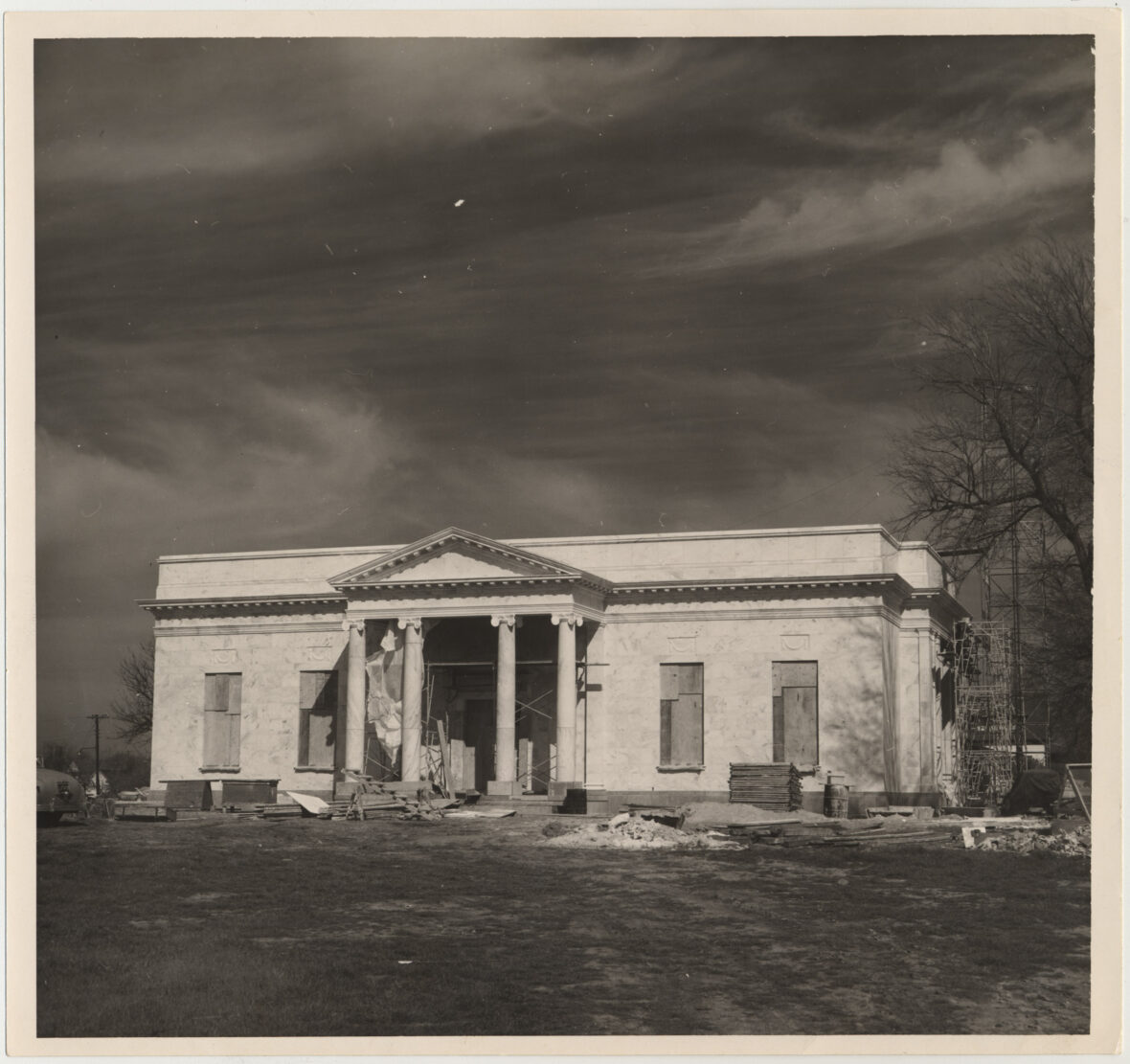
The building is approximately 6,000 square feet, and a majority of the materials used in its construction were produced in the state of Texas to be reflective of Speaker Rayburn’s love for Texas. The stone of the foundation slab is rumored to have come from Lyndon B. Johnson’s Stonewall, Texas ranch. The roof is composed of copper in order to withstand both the humid, scorching summer heat and bitterly cold winters of Northeast Texas. Another unique element is the Georgia marble exterior. The exterior walls and archways are composed of pink granite flagstones and brick. The primary (south) facade of the library features four monumental columns with ionic capitals. Above each window is a swag in relief in the white marble. A large brass encased floor-to-ceiling picture window highlights the east side of the building. The building is topped by an ionic entablature, complete with dentil molding along the frieze. Corbelled bracketing highlights the cornice work along the outside of the building.
Inside the building, the lobby walls are made of forged Italian black marble cut in Tennessee—to honor Rayburn’s birthplace—with white dentil molding along the top. The lobby floors are white and black marble tile, in contrast to the floors throughout the rest of the building, which are covered in vinyl tile.
Learn more about the different rooms and exhibitions in the Rayburn Museum, including the Speaker’s replica office.
Significance
Reflective of the unique and illustrious career of the man for whom it was built, the museum itself is an architectural feat. The Rayburn Museum meets Criterion B, at the state level of significance, in the Area of Politics, for its association with a political figure of outstanding importance. It also meets Criterion C in the Area of Architecture at the local level of significance as the most prominent and finest example of a Classical Revival public building in Fannin County, designed by Roscoe DeWitt and constructed by the Carpenter Brothers. Finally, the building also meets Criterion Consideration G for Properties that Have Achieved Significance within the Last Fifty Years because it is associated with the productive life of an exceptionally important statesman, and it represents his interest in establishing a permanent cultural legacy in his hometown.
The Sam Rayburn Museum was listed on the National Register of Historic Places on May 6, 2005, and became a Recorded Texas Historic Landmark in 2008.
There have been several preservation and conservation projects. However, since its opening in 1957, there have been no architectural changes to the structure of the Sam Rayburn Museum.
In 2007, the Briscoe Center commissioned ArchiTexas to address issues in the Rayburn Museum, including roofing, exterior maintenance concerns, and modifications to meet ADA and TAS standards.
As part of the exhibit renovation in 2012, the textiles in the replica Speaker’s office were cleaned and the fabric stabilized for preservation and the seats that were originally in the House of Representatives were restored.
An artwork conservation project included the cleaning and preservation of paintings on permanent display in the museum. These included a portrait of Speaker Rayburn, a series of eight gold medallion presidential portraits by Victor Lallier that were given to the Rayburn Museum in 1962, as well as one of Rayburn’s sister, Miss Lou.
In 2014, the museum’s New England Colonial style chandelier was successfully restored and rehung in the museum’s foyer. Crafted in Dallas by Potter Art Metal Studios, Inc., the chandelier dates to 1928 and was originally hung in a church in New England. The museum’s architect, Roscoe DeWitt, discovered the chandelier in an antique shop and believed the fixture would fit perfectly in the museum’s grand main foyer. Over time, one of the chandelier’s arms had cracked, and the silver plating had worn away, leaving a dull patina. Conservators at van Enter Studio in Dallas disassembled the chandelier, cleaned and re-plated individual pieces, replaced the broken arm, and rewired the entire piece. In addition, they applied lacquer to the silver plated components to insure a long-lasting polished appearance.


